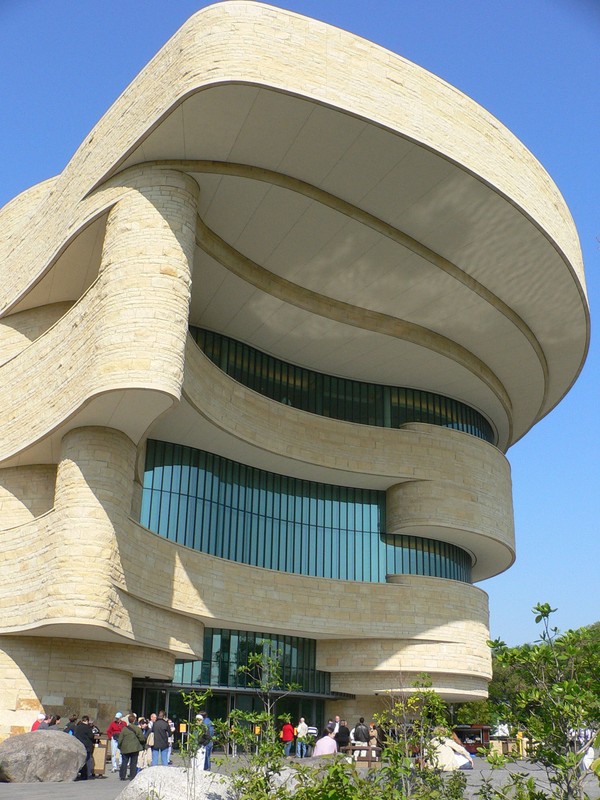Smithsonian National Museum of the American Indian
Introduction
Text-to-speech Audio
Images
A view of the National Museum of the American Indian.

For an overview of Native American history, click the link below for James Wilson's book, The Earth Shall Weep: A History of Native America

Backstory and Context
Text-to-speech Audio
In the early 1990s, the Smithsonian and Congress began to explore the creation of a museum dedicated to American Indians. The effort was the result of conversations with numerous Native communities and historians. Although these dialogues were originally efforts to discuss the ground-level requirements for the museum, these ideas branched out to discuss how the lives and cultures of Native peoples could be incorporated into the actual building itself. Some of these ideas manifested in a natural landscape being constructed around the museum, as well as the building being constructed to seem as though it was weathered and constructed by nature.
The construction of the landscape was inspired by the Native belief that the earth retains memories of its past. In considering this concept, the landscape was designed in such a way to resemble the landscape of the Americas prior to contact from European settlers. Some considerations that were included are, for example, hardwood forests, wetlands, meadows, traditional croplands, grandfather rocks, and cardinal direction markers.
The museum itself displays a number of both temporary and permanent exhibits on American Indian life and culture. Some of its permanent exhibits focus on Native cosmology, the history of Native peoples and how they once lived, and also examinations of contemporary Native culture and life.
